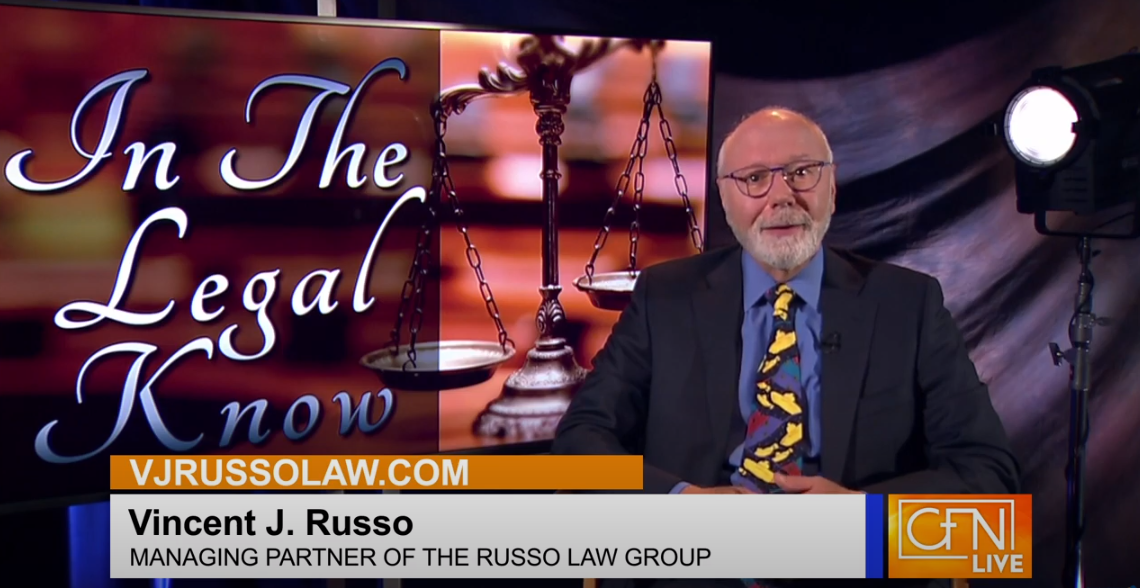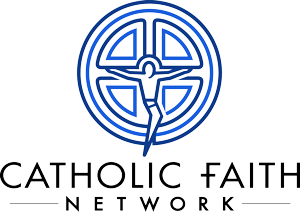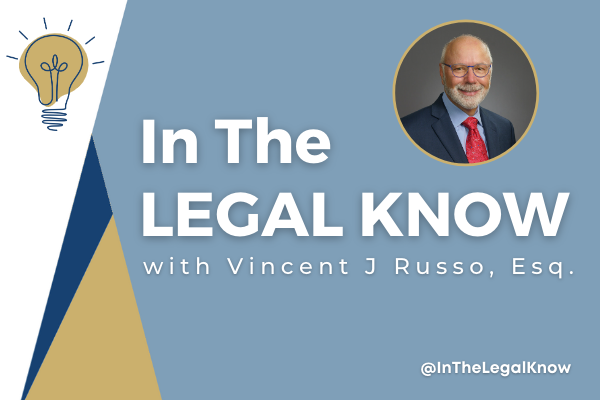This originally aired on the Catholic Faith Network’s show CFN Live: https://youtu.be/aQgwbQkJtC0 How can SSI…

Vincent Russo on CFN Live – The Nuts and Bolts of IRAs – Part Two
Vea a Vincent J. Russo como corresponsal jurídico en el programa CFN Live de Catholic Faith Network.
Vincent appeared on CFN Live on Enero 26th to discuss “The Nuts and Bolts of IRAs – Part Two”
Colleen: Funding IRAs (Individual Retirement Accounts) is a good way to fund your retirement? Today, we will discuss with Vincent J. Russo some of the ins and outs of funding IRAs – Part Two.
Vincent: Este es sin duda un tema oportuno ya que tenemos que presentar las declaraciones de impuestos para el año pasado antes del15 de abril y ahora estamos en un nuevo año fiscal.
When we spoke last, we discussed:
- The benefits of IRAs as a retirement plan strategy
- IRAs are a vehicle for one to save for their retirement years.
- There are several benefits for having an IRA.
- Las cuentas individuales son accesibles y fáciles de crear
- Puede beneficiarse ahora mismo de una desgravación fiscal para las cuentas individuales tradicionales
O aplace la desgravación fiscal de su cuenta ROTH IRA hasta la jubilación
- Su cuenta IRA es exclusivamente suya.
- Who can fund an IRA and with how much each year?
- Almost anyone can contribute to a Traditional IRA, provided you have earned income. If you’re married and one of you doesn’t work, the employed spouse can contribute into a so-called spousal IRA for the other.
- For 2021 or 2022, you can contribute up to the lesser of 100% of your earned income or $6,000.
- Una vez cumplidos los 50 años, los límites de aportación a las cuentas individuales aumentan a 7.000 $ anuales (1.000 $ adicionales como aportación de recuperación).
- The difference between a Traditional IRA and a Roth IRA
- There are two types of IRAs: Traditional IRAs and ROTH IRAs. A traditional IRA is funded with pre-tax dollars and a ROTH IRA is funded with after tax dollars.
- And lastly, when to fund your IRA account
- IRA contributions can be made anytime during the year or by the due date for filing your tax return for that year. The best time to fund an IRA is Enero 1st of the tax year.
Colleen: Vincent, can you start with an example of the power of funding an IRA?
Vincent: The benefits are clear due to Tax deferral and Compounding. The immediate tax savings can compound over time if you invest them.
Por ejemplo, supongamos que a partir de los 30 años aporta 6.000 $ a su cuenta IRA cada año durante 37 años. Imagine que así se ahorra 1.500 $ de impuestos sobre la renta cada año, y que coge ese dinero y lo invierte por separado. Al final de esos 30 años, tendría 763.609 $ (después de impuestos - 649.067 $ frente a 409.686 $ (si invirtiera fuera de la cuenta IRA).
Colleen: So, let’s move on to taxes When do you pay the taxes on your IRA
Vincent: Eventually, you will have to pay taxes on your Traditional IRA. Your withdrawals will be subject to ordinary income tax. On top of that, if you take the money out before turning age 59 1/2, you can be hit with a 10% penalty.
You will also be obligated to take required minimum distributions (RMDs) from a Traditional IRA after you turn age 72, so you won’t be able to avoid the IRS forever.
Now with a Roth IRA, there is no tax on withdrawn contributions or earnings if over 59 ½ and the account has been held at least five years.
Colleen: Can you give examples of when you can take money out of an IRA without a penalty
Vincent: There are nine exceptions to the Penalty Rule (when you make withdrawals prior to age 59. Let me address this list quickly:
- Made on or after the date you turn 59½
- Taken because you have a permanent disability
- Made by a beneficiary or your estate after your death
- Used to buy, build, or rebuild your first home (a $10,000-lifetime maximum applies)
- You’re taking a series of substantially equal distributions
- You have unreimbursed medical expenses exceeding 10% of your adjusted gross income (AGI)
- You’re paying medical insurance premiums after losing your job
- The distribution is due to an IRS levy
- You’re taking qualified reservist distributions
- You need the money for qualified disaster recovery
- You’re taking the distribution to pay for qualified education expenses
- You’re covering the cost of childbirth or adoption expenses, up to $5,000
Now, to confuse matters, if the early withdrawal is from a Roth IRA, there is no penalty for withdrawing ROTH IRA contributions; but the penalty rules to apply to withdrawal of earnings.
Colleen: When must you take IRA Distributions
Vincent: You will also be obligated to take required minimum distributions (RMDs) from a Traditional IRA after you turn age 72, so you won’t be able to avoid the IRS forever.
The amount you take is based on an IRA Table – the starting point is age 72 (unless you were 70 prior to Julio 1, 2019). The amount must by taken by Abril 1of the following year.
One of the big distinctions from a Roth IRA and a Traditional IRA is that there is no requirement to take RMDs from a Roth RIA.
Another day we will address this subject in greater detail and Inherited IRAs.
Colleen: Vincent, ¿por qué es tan importante para financiar una cuenta de jubilación?
Vincent: Colleen, estamos viviendo más tiempo y antes de que uno se da cuenta, tienen que averiguar cómo vivir en sus años de jubilación. Hoy es el día para que todo el mundo se asegure de que está financiando sus cuentas de jubilación para el futuro, antes de que sea demasiado tarde.
For more information on these topics and more, you can download for free our Planning Guides from our law firm website at vjrussolaw.com
Puede encontrar a Vincent en episodios anteriores de CFN Live haciendo clic aquí.
Los temas incluyen:
- Cambios en el programa de atención domiciliaria de Medicaid del Estado de Nueva York
- Conceptos básicos de planificación patrimonial - Parte 1: ¿Por qué necesito un plan de sucesión?
- Conceptos básicos de planificación patrimonial - Parte 2: ¿Qué incluye un plan patrimonial?
- Conceptos básicos de planificación patrimonial - Parte 3: ¿Cuándo y por qué debo actualizar mi plan patrimonial?
- Planificación patrimonial para niños con necesidades especiales - Parte 1: ¿Cómo cuido y protejo a mi hijo?
- Planificación patrimonial para niños con necesidades especiales - Parte 2: ¿Qué prestaciones públicas existen?
- Planificación patrimonial para niños con necesidades especiales - Parte 3: ¿Qué medidas debo tomar para mi hijo adulto con necesidades especiales?
- Planificación de la asistencia a largo plazo - Parte 1: "¿Cómo pago la asistencia a largo plazo?"
- Planificación de la asistencia a largo plazo Parte 2: "¿Cómo puede ayudarme la asistencia domiciliaria de Medicaid?"
- Planificación de la asistencia a largo plazo - Parte 3: "Cómo cumplir los requisitos para Medicaid"
- ¿Qué es un poder notarial?
- Actualizaciones jurídicas importantes
Esperamos que sintonice CFN Live. Es un programa dinámico con noticias de actualidad y colaboradores fascinantes que tienen historias inspiradoras que contar. El nuevo programa CFN Live se emite de lunes a viernes. a las 9 de la mañana y a las 7 de la tarde. Podrá ver el programa en cualquier momento, según le convenga, en el canal de YouTube de CFN.
a las 9 de la mañana y a las 7 de la tarde. Podrá ver el programa en cualquier momento, según le convenga, en el canal de YouTube de CFN.
Puede obtener más información sobre la Red de Fe Católica y CFN Live visitando https://www.catholicfaithnetwork.org/cfn-live.
 Socio Director de Russo Law Group, Vincent J. Russoes uno de los principales colaboradores del nuevo programa CFN Live de Catholic Faith Network. Vincent es el corresponsal jurídico del programa. En su segmento, titulado "In the Legal Know", Vincent le mantendrá al tanto de las últimas novedades legales, incluyendo la ley de ancianos, necesidades especiales y planificación patrimonial - todo para ayudarle a tomar decisiones de planificación informadas para protegerse a sí mismo, a sus seres queridos y a sus activos.
Socio Director de Russo Law Group, Vincent J. Russoes uno de los principales colaboradores del nuevo programa CFN Live de Catholic Faith Network. Vincent es el corresponsal jurídico del programa. En su segmento, titulado "In the Legal Know", Vincent le mantendrá al tanto de las últimas novedades legales, incluyendo la ley de ancianos, necesidades especiales y planificación patrimonial - todo para ayudarle a tomar decisiones de planificación informadas para protegerse a sí mismo, a sus seres queridos y a sus activos.



Esta entrada tiene 0 comentarios